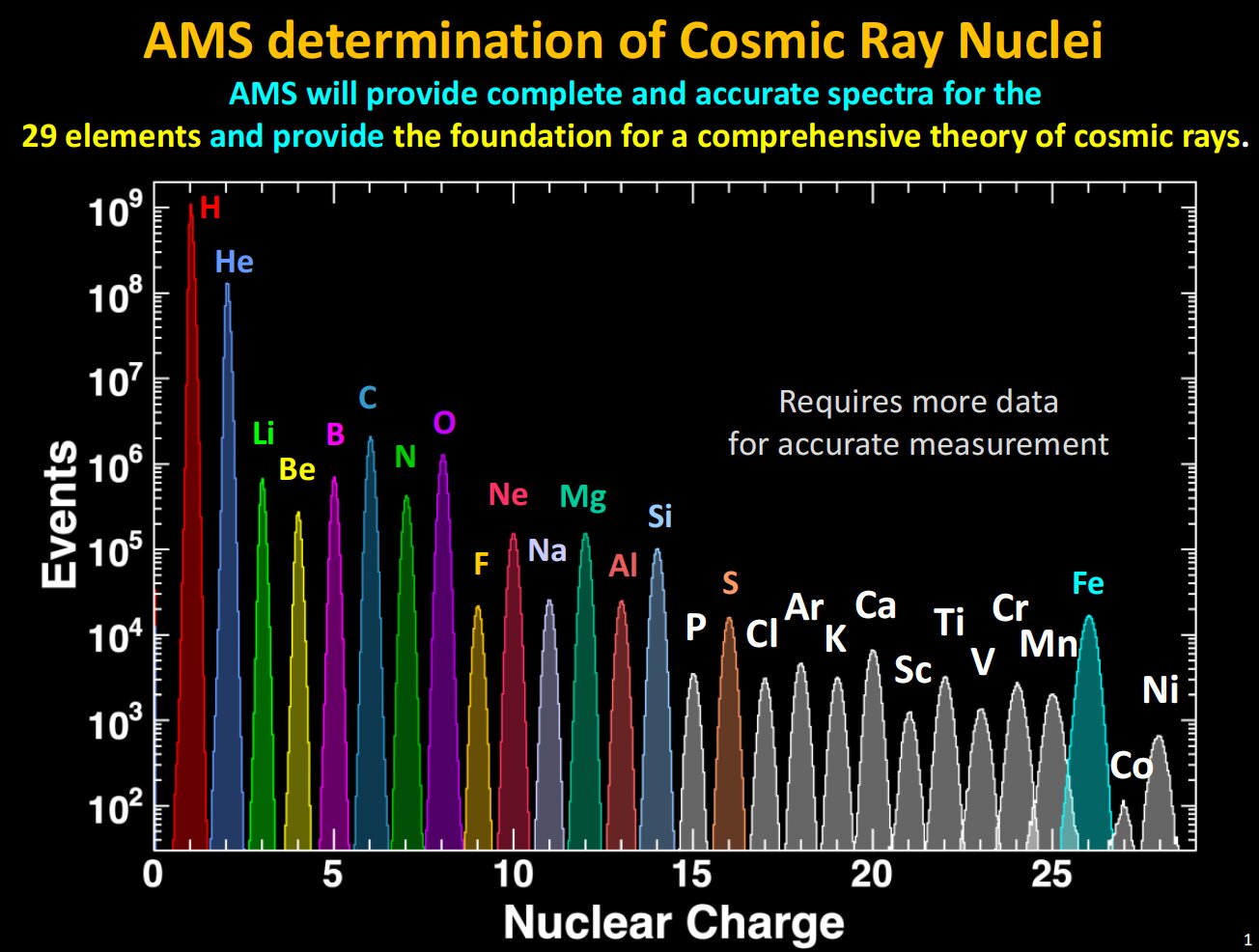- cross-posted to:
- astronomy@mander.xyz
- cross-posted to:
- astronomy@mander.xyz
Charged cosmic rays, high-energy clusters of particles moving through space, were first described in 1912 by physicist Victor Hess. Since their discovery, they have been the topic of numerous astrophysics studies aimed at better understanding their origin, acceleration and propagation through space, using satellite data or other experimental methods.
The Alpha Magnetic Spectrometer (AMS) collaboration, a large research group analyzing data collected by a large magnetic spectrometer in space, recently gathered new insight about the properties and composition of specific types of cosmic rays. In a new paper, published in Physical Review Letters (PRL), they specifically unveiled the composition of primary cosmic-ray carbon, neon, and magnesium, along with the composition and properties of cosmic-ray sulfur.


